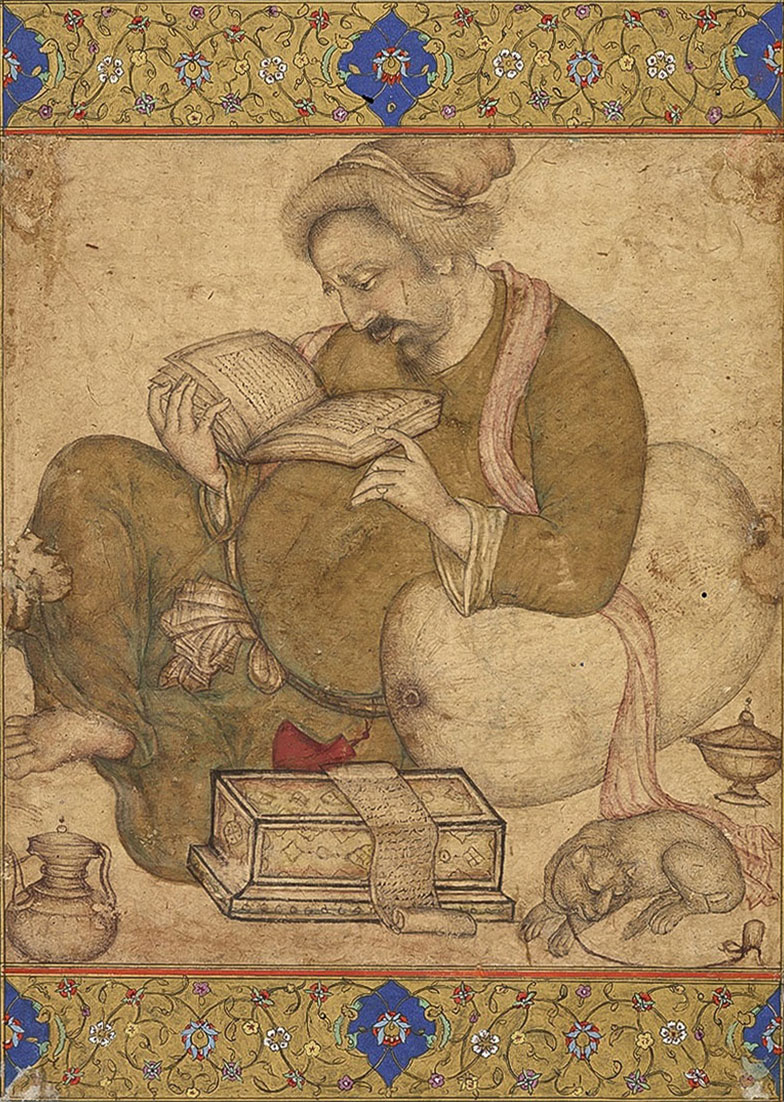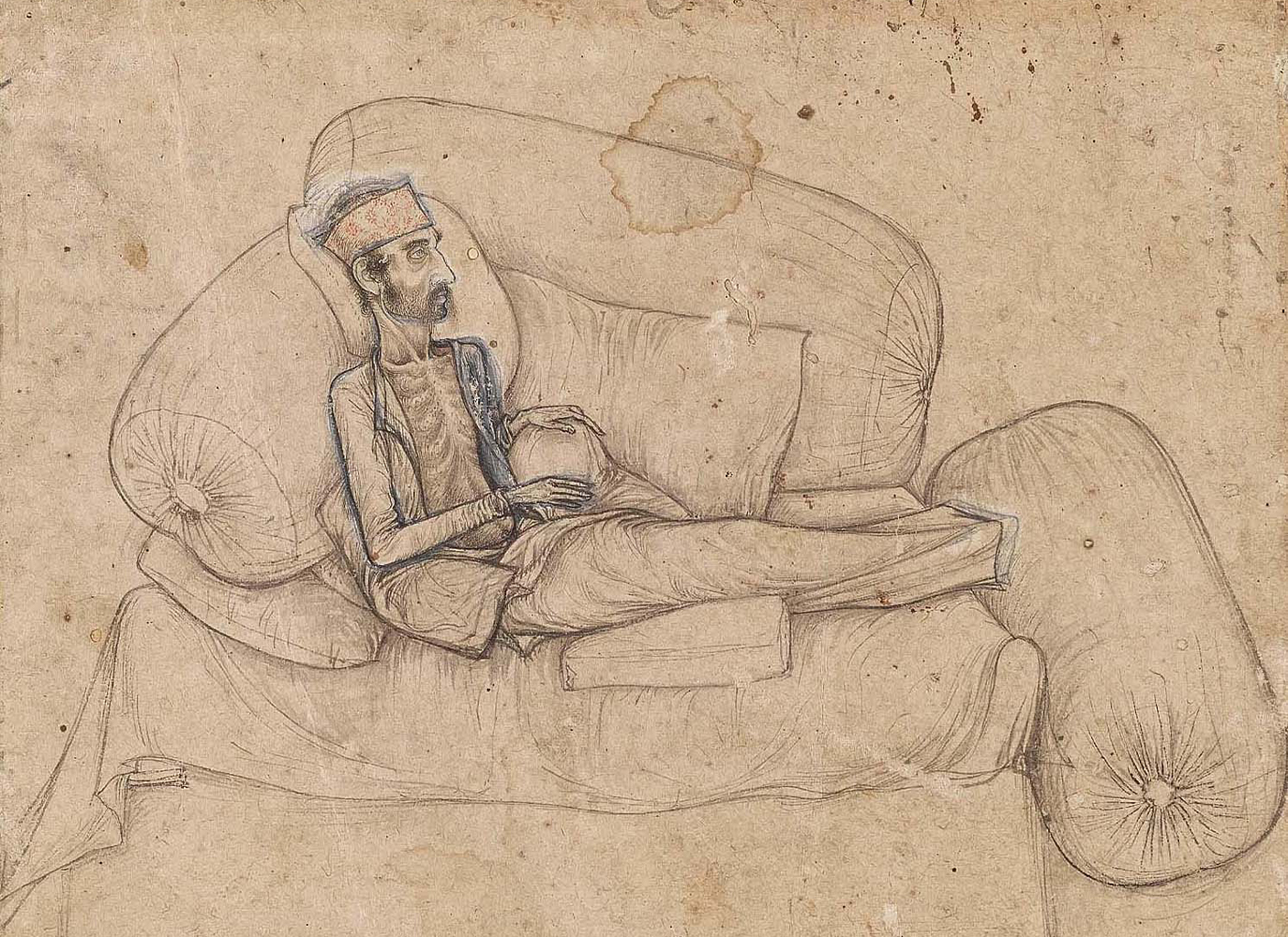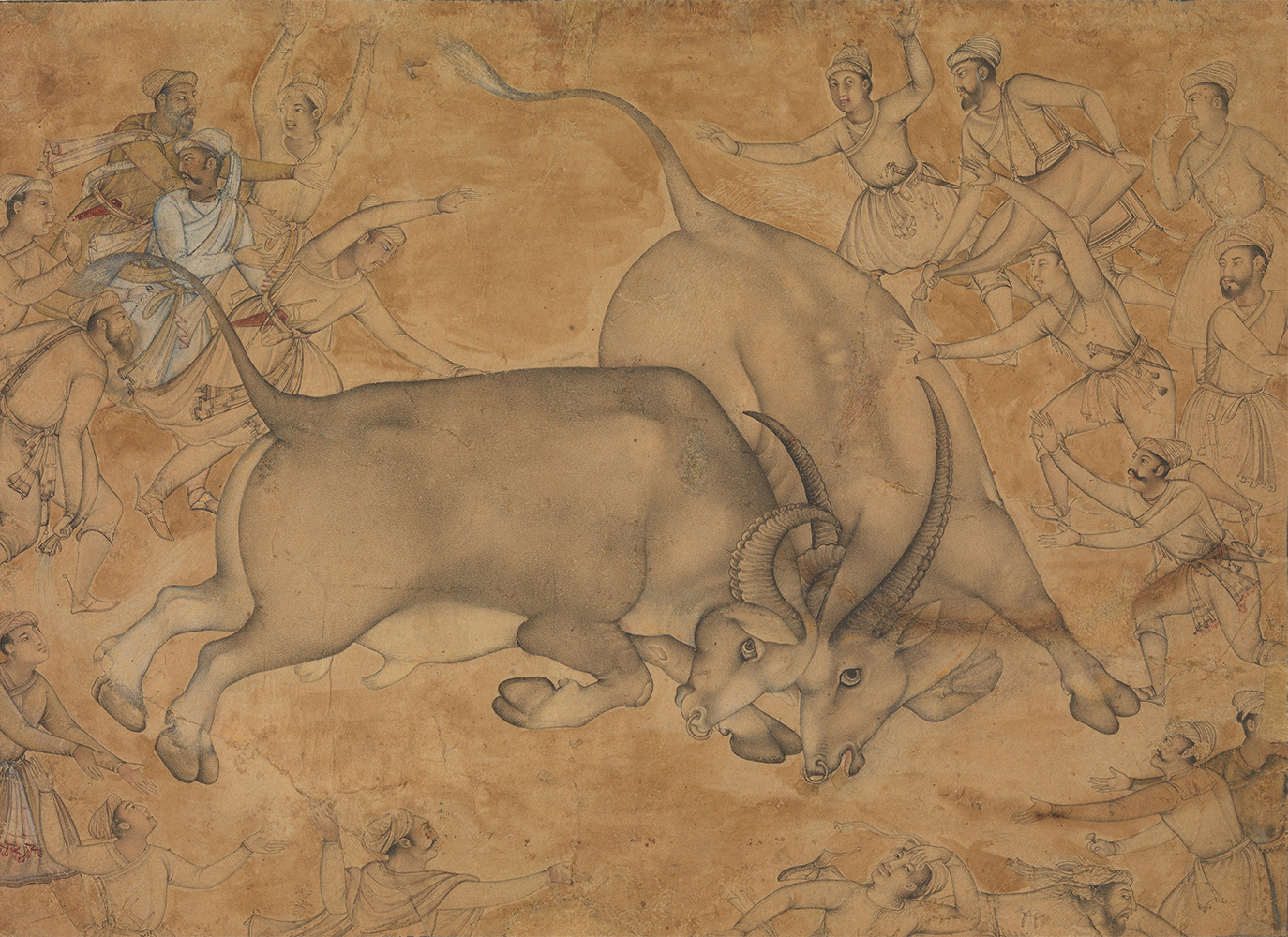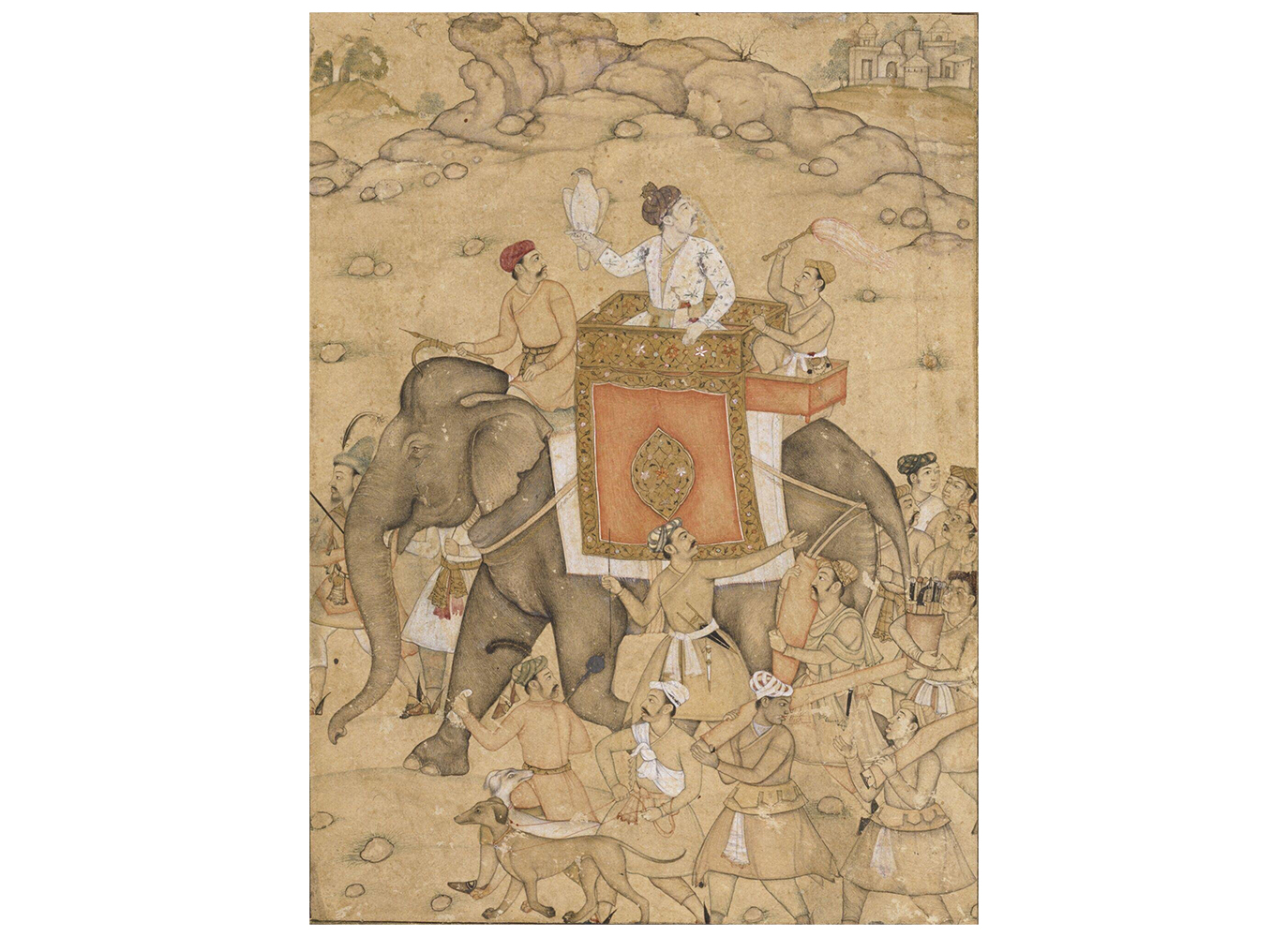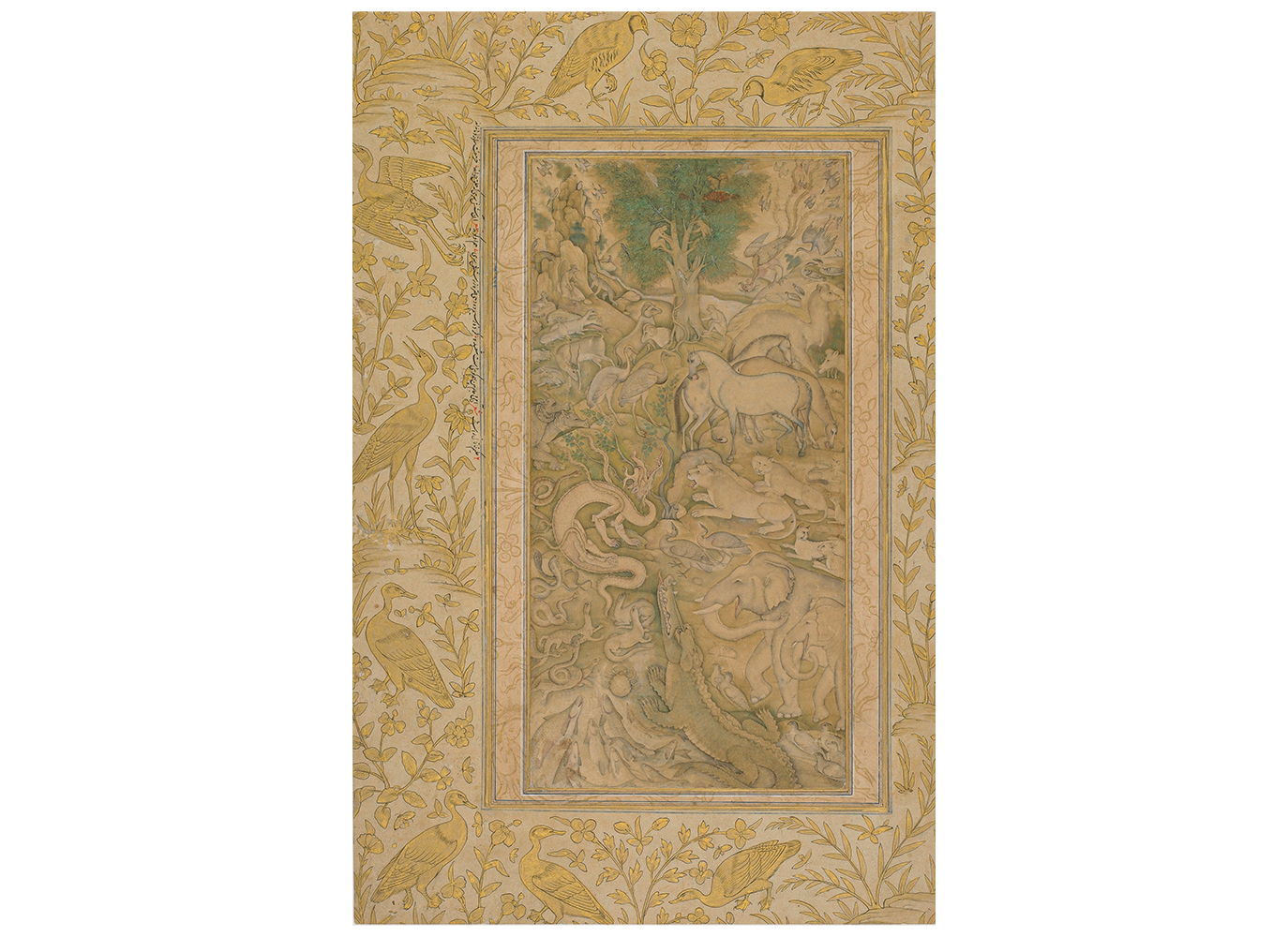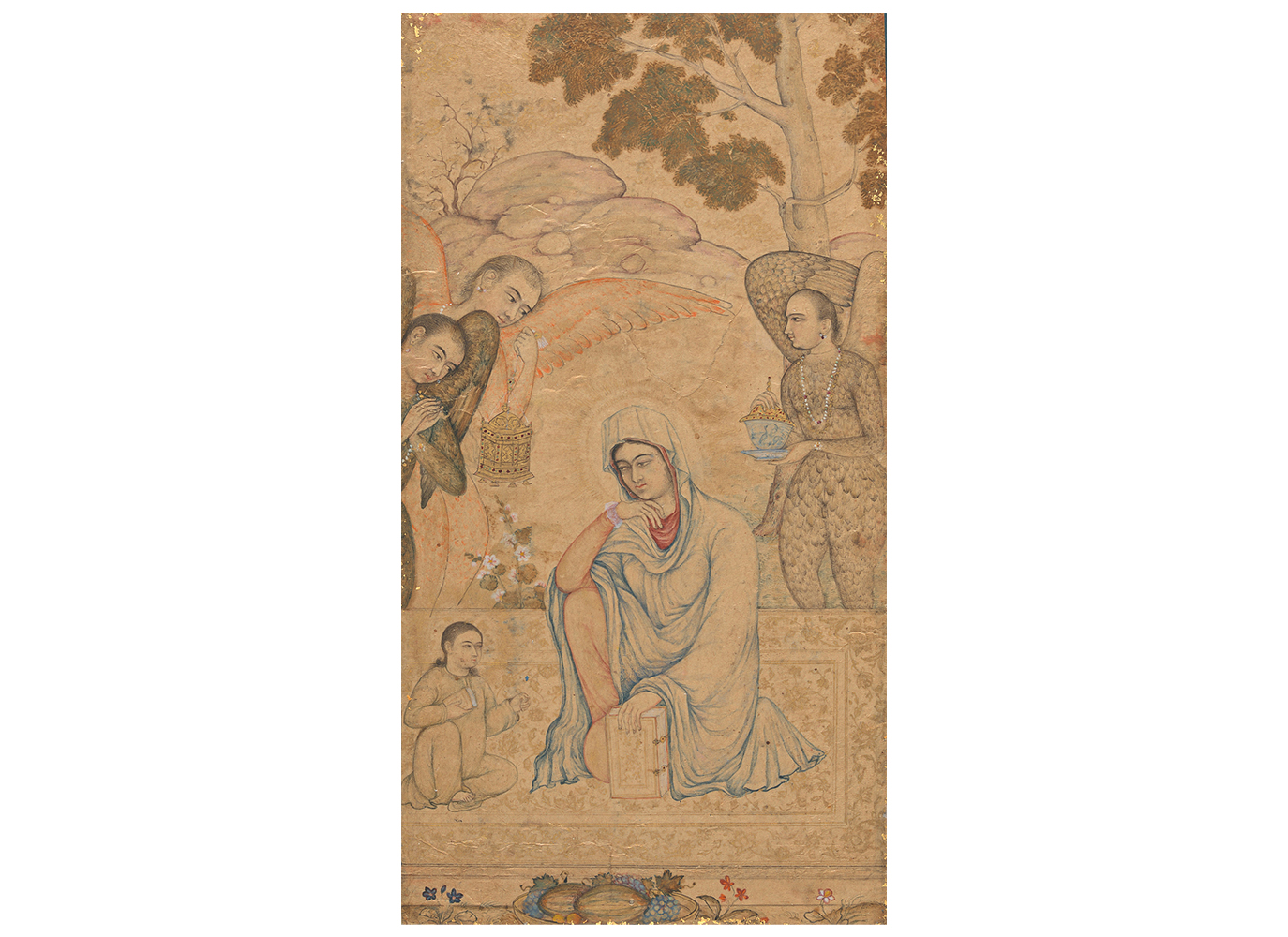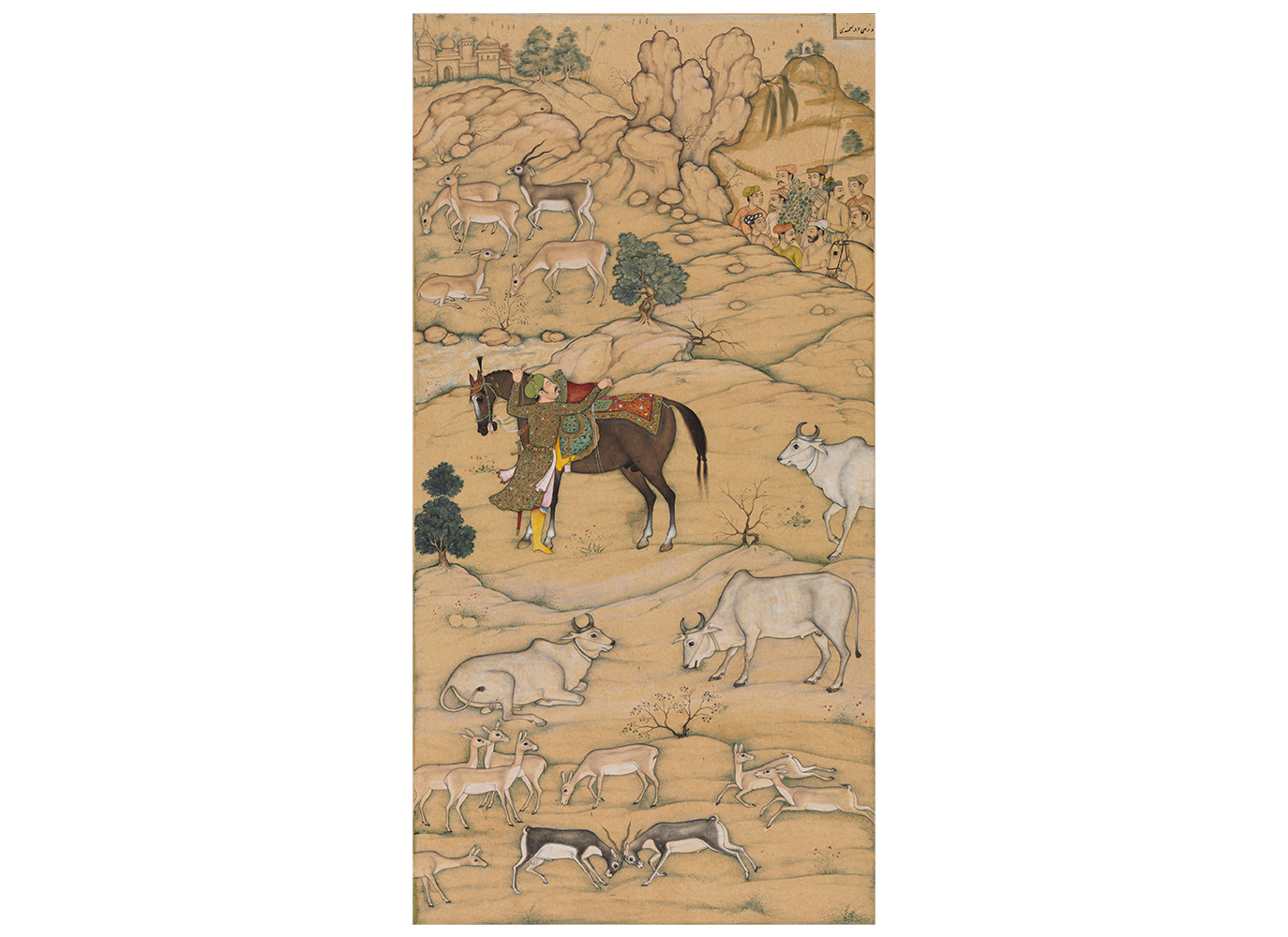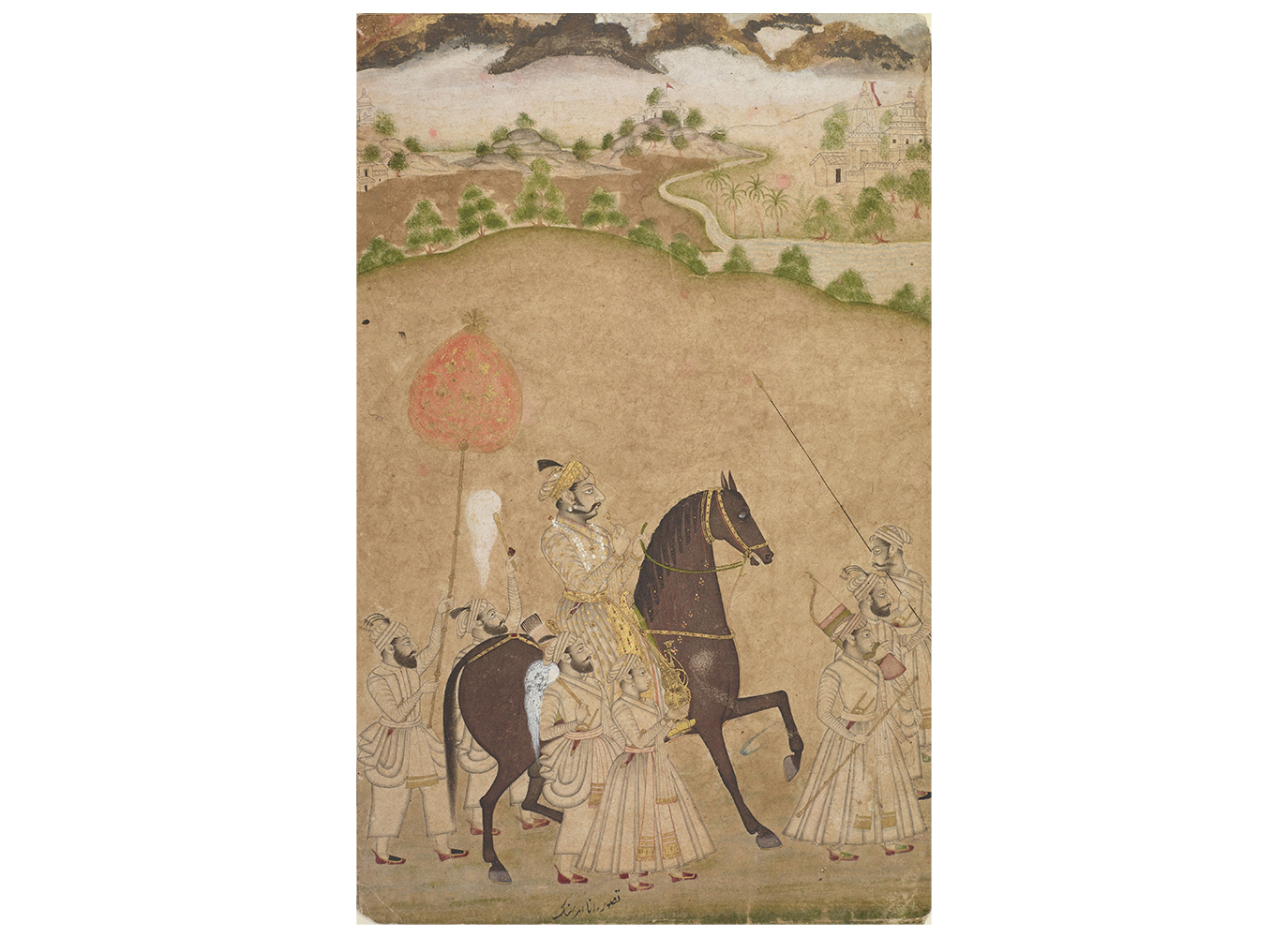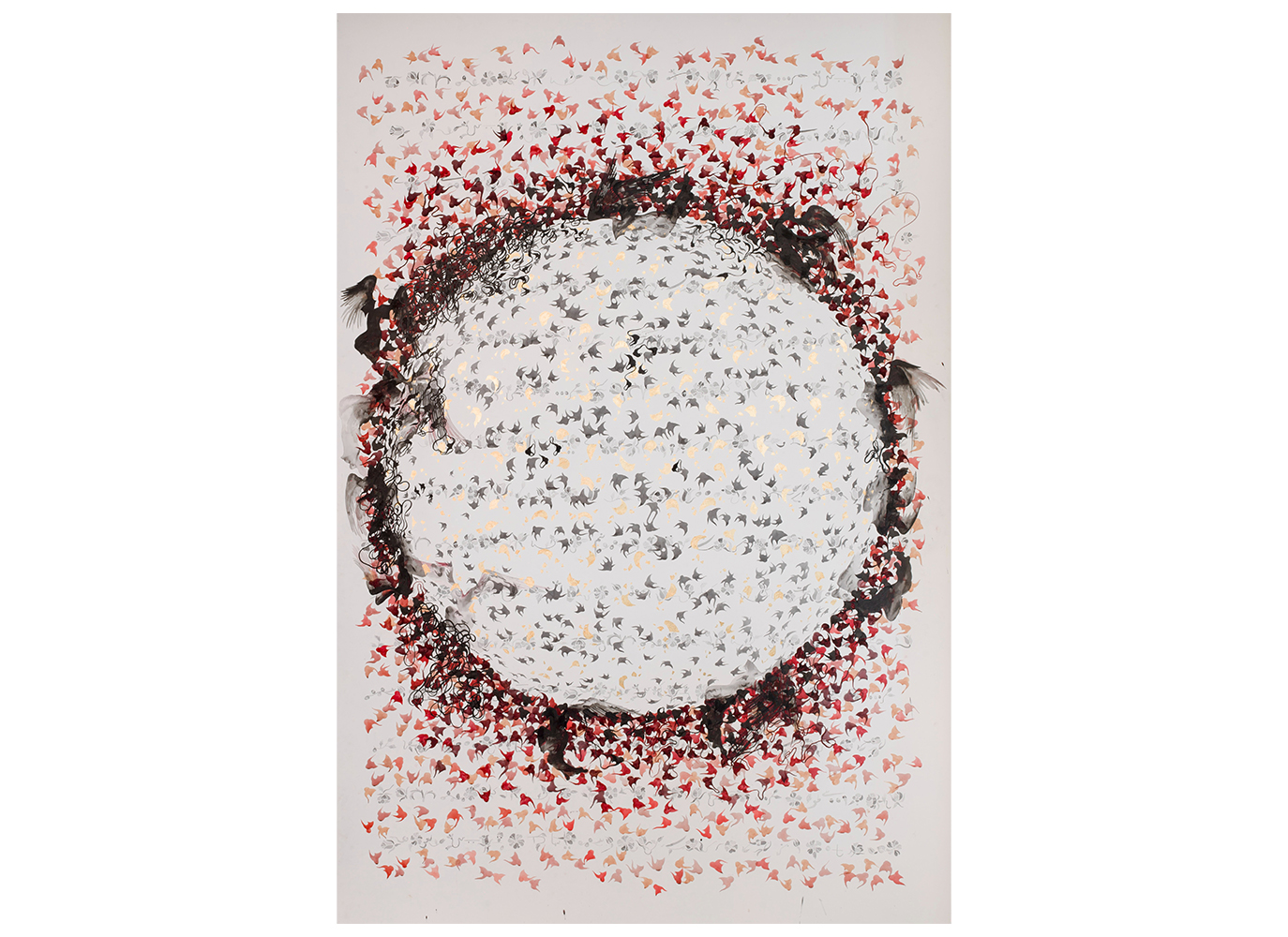ARTICLE
Nim Qalam
The technique began to be used in the Deccan in the latter half of the seventeenth century, possibly due to an influx of European engravings from the port in Goa. By the end of the century, it had spread to present-day Rajasthan, as exemplified by the work of the Stipple Master of Mewar, an anonymous painter who pioneered the use of the technique in Udaipur.
Some scholars have argued that nim qalam may have had precedents in Persian painting. In Ilkhanid courts in the thirteenth century, line drawings were used to imitate Chinese woodblock prints. By the fourteenth and fifteenth centuries, Persian artists had begun to produce line drawings in European styles — a phenomenon that the Mughals and the Deccan sultans would have been aware of even before the arrival of printed European manuscripts in their courts.
The nim qalam technique continues to be used by contemporary South Asian artists working on manuscript paintings, such as Shahzia Sikander.
Bibliography
Bailey, Gauvin A. The Jesuits and the Grand Mogul: Renaissance Art at the Imperial Court of India, 1580–1630. Washington, D.C.: Freer Gallery of Art, Arthur M. Sackler Gallery, Smithsonian Institution, 1998.
Losty, J.P. Indian Book Painting. London: British Library, 1986.
Michell, George, and Mark Zebrowski. Architecture and Art of the Deccan Sultanates. Cambridge University Press, 1999.
Natif, Mika. Mughal Occidentalism: Artistic Encounters between Europe and Asia at the Courts of India, 1580–1630. Brill, 2018.
Stronge, Susan. Painting for the Mughal Emperor: The Art of the Book, 1560–1660. London: V&A publications, 2002.
Topsfield, Andrew. Court Painting at Udaipur: Art under the Patronage of the Maharanas of Mewar. Zurich: Artibus Asiae Publishers; Museum Rietberg, 2001.




